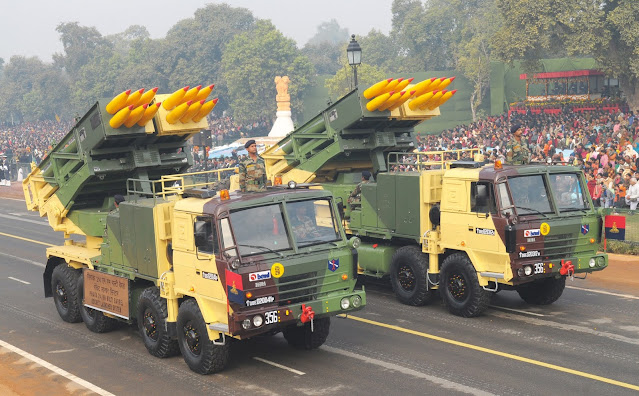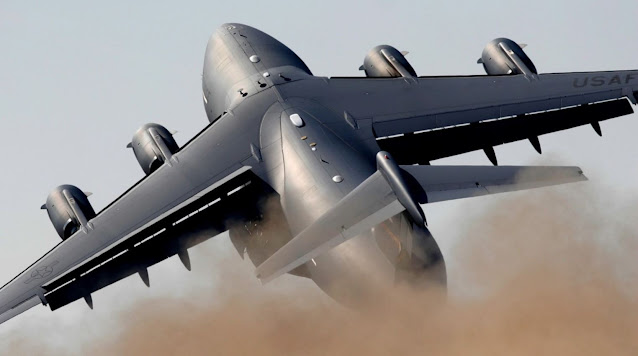India's Military Deficit - Part 1 (Army)
The recent events at LAC and LOC have brought into focus the level of preparedness of Indian Armed Forces. This analysis is for the 3 branches, namely Army, Air Force and Navy. This article is a basic study into the requirements for each force for weapon systems both for offense and defense.
Let us see the basic facts first:
1. India has a very long border with China, Pakistan, Bhutan, Myanmar and Bangladesh. The strange part is the largest shared border among them is with Bangladesh. The total length of the border is about 15,200 km.
2. Also the maritime border is 7,000 km. Surprisingly, unknown to most we share this border with not only Pakistan, Sri Lanka, Bangladesh and Myanmar, but also with Indonesia, Maldives and Thailand.
To analyze and get basic idea about requirements for various kinds of defense equipment we can get guidance from the other armed forces of Top 10 military powers viz USA, China, Russia, France, Israel, Japan, Italy, Germany and UK.
The goal is see if can get an idea of numbers required for each major equipment and compare with how many are already present with Indian military.
Let us start with Indian Army:
1. Tanks: To simplify analysis of war situation, we can assume 10% of our land boundary of 15,200 is under attack and a tank has a range of 2 km and fires 4 rounds per minute, with angle of 10 degree covered in an attack formation. So about 350 m of boundary can be covered by a single tank (=r*Θ). Also tanks go in formation shoulder to shoulder with a typical width of 5 m and speed of 50 km/h. So the number of tanks required comes to 4,343. We have 4,500 tanks involving Arjun MBT, T-72 and T-90S. So we seem to have sufficient tanks and need to replace them with our Arjun MBT as old ones (T-72) retire. So how is the ratio between required vs available: 4,343 vs 4,500 i.e. 1.
2. Multi Rocket Launch System (MRLS): Here India has home grown system available in the form of Pinaka. Its range varies from 40 to 100 kms. This has devastating effect on enemy forces due to its high rate of fire against conventional artillery and tanks. Surprisingly only 21 batteries are operational in India. Here each battery can neutralize an area of less than 1 sq km, implying it can protect 1 km of border. Also 3 batteries make up one regiment. So if we need MRLS to guard even 50% of our land border then we need half of 15,200/3 regiments i.e. 2533. At present, we have 7 regiments in operation.So how is the ratio between required vs available: 2,533 vs 7 i.e. 362. This is single most weakness of Indian military's offensive power.
3. Air Defense System: The SAM Akash 1S missile system covers a boundary of 45 km with 12 missiles. Since it needs to protect our land boundary of 15,200 km and maritime boundary of 7,000 km, so the total SAM systems required are 2,465, considering 5 targets attacking each km. Presently Indian Army has 2000 missiles i.e. 2000/12 systems. So how is the ratio between required vs available: 2,465 vs 166 i.e. 15.
4. Self propelled artillery: Assuming each artillery formation has 10 guns, range 20 km and covers 10 degree angle, the boundary protected comes to 3 km per 10 guns. If each gun fires 4 rounds per minute and assuming 50% of total artillery should be self-propelled in a highly mobile new war, the numbers needed to protect our total boundary is 9,250. Our present self propelled guns are only 250. So the ratio between required vs available: 9,250 vs 290 i.e. 37. This comes out to be our second biggest shortcoming till now.
5. Towed artillery: By above calculation, towed artillery requirement is also 9,250. We have 5,067 artillery guns. So the ratio between required vs available: 9,250 vs 5,067 i.e. 2.
6. Armored vehicles: To simplify, we can assume, 10% of our infantry troops need to have AFV vehicles, like BMP-2 in a battle for reconnaissance, movement and CI operations. Each vehicle can carry 10 soldiers usually. This makes the required numbers of AFV to 21,667, while we have only 5,681 vehicles available. Most of these AFVs are very old. The ratio between required and available is 21,667 vs 5,681 i.e. 4.
7. MANPADS: This refers to the Man Portable Air Defense systems. In Himalayas, providing infantry with MANPADS can be very effective against enemy helicopters and bombers. Assuming 25% of our army of 1.3 million is stationed in mountains and only 10% of them are provided with MANPADS, we can make an estimate. This brings the requirement to 32,500, while our current numbers are only 2,745. So the ratio between required and available is 32,500 vs 2,745 i.e. 12. This is another weapon system that is of concern for protecting our borders.
8. Transport aircraft big and medium: To transport at least 5% of our infantry and tanks in an emergency we should have large (C-17) and medium (AN-32) aircraft available. Assuming an aircraft can transport either 100 infantry or 3 tanks, the required aircraft are 713. While we have only 160 medium and 25 large aircraft. So the ratio between required and available is 713 vs 105 i.e. 7. The point to be stressed is we are not able to provide logistics to even 5% of our army with our aircraft.
Factors behind this deficit in Indian Army:
1. Inducting Indian equipment in small amount like only 2 regiments for Pinaka MRLS, when the need is for hundreds of them to be deployed near border. Arjun MBT has not been inducted in large amounts even after 15 years of passing all tests.
2. A very large infantry size, without the use of helicopters for border management. So even though more than 50% of defense budget is for Indian Army, it is being mostly spent on salary and pension.
3. A very low emphasis on force-multipliers, like transport aircraft, APCs for strategic lift and tactical deployments.
4. Long time to evaluate any new design, development or acquisition of Indian equipment. e.g. 10+ years for Arjun-MBT.
5. A very high regard for imports, with no streamlining of weapon systems so that they can be indigenized or replaced with Indian systems in the long run. e.g. Plethora of small and medium firearms provided to our security forces from diverse vendors.
In the next article, we shall talk about Indian Air Force.










Comments
Post a Comment